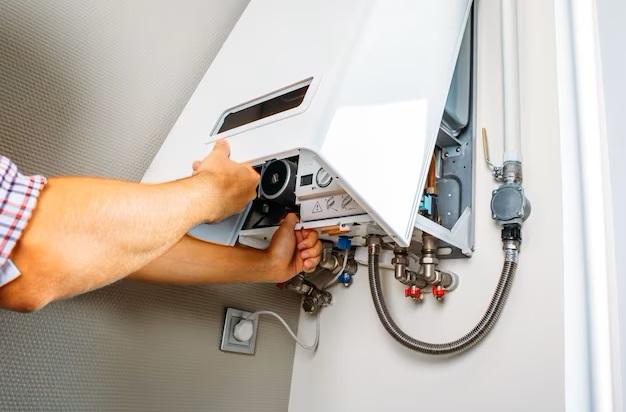Your water heater is a vital home appliance, furnishing you with hot water for various purposes such as bathing, dishwashing, and more. To ensure its continuous efficiency and long-term functionality, it is crucial to conduct regular maintenance. Neglecting this upkeep can result in reduced performance, increased energy expenses, and even the need for costly repairs or replacement.
Adjust Temperature Settings
Begin by verifying the water heater’s temperature settings. Setting it between 120 and 130 degrees Fahrenheit is advisable to prevent scalding and minimize energy consumption. If needed, adjust the thermostat, but exercise caution not to set it too low, as this could foster bacterial growth inside the tank.
Test the Pressure Relief Valve
The pressure relief valve constitutes a critical safety feature for your water heater, averting excessive pressure buildup within the tank. To test it, gently lift the valve’s lever, listening for the hissing sound as hot water and steam release. If the valve malfunctions or no water escapes, it might necessitate replacement.
Drain and Flush the Tank
Sediment and mineral buildup can accumulate over time at the bottom of your water heater’s tank, diminishing its efficiency and potentially causing damage. To prevent this, perform an annual tank draining and flushing procedure:
- Disable the power supply (electricity or gas) to the water heater.
- Attach a garden hose to the tank’s drain valve.
- Direct the hose to a suitable drainage point, such as a floor drain or outdoors.
- Open the drain valve until the water runs clear.
- Close the drain valve and refill the tank.
Inspect the Anode Rod
The anode rod, a sacrificial component, plays a role in thwarting corrosion inside the tank. Check it yearly by removing it from the tank. If it’s over 50% depleted or shows signs of heavy corrosion, replace it with a new one.
Check For Leaks
Regularly scrutinize the area around your water heater for indications of leaks. Water pooling, dampness, or rust around the tank or connections necessitates immediate attention to prevent further damage.
Insulate the Tank and Pipes
Enhance energy efficiency by insulating your water heater tank and pipes. Water heater blankets and pipe insulation materials are available at local hardware stores. Always adhere to the manufacturer’s installation instructions.
Schedule Professional Maintenance
While homeowners can perform many maintenance tasks, arranging for professional maintenance at least once annually is advisable. A qualified technician can thoroughly examine and service your water heater, ensuring its safe and efficient operation.
Regular water heater maintenance is indispensable for extending lifespan and preserving peak performance. By following these tips and remaining vigilant for signs of trouble, you can enjoy consistent hot water for years, potentially reducing energy costs and avoiding expensive repairs. Don’t wait for your water heater to malfunction—invest in its maintenance today for a more comfortable and cost-effective tomorrow.

